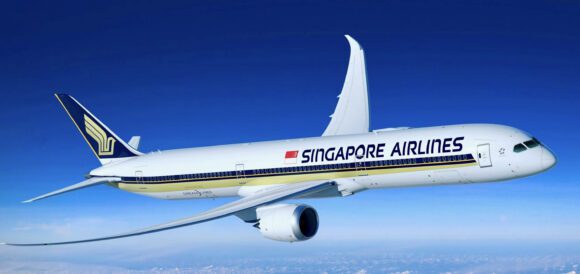
Singapore
Singapore Airlines is reasonably satisfied with the results for its fiscal year 2018-2019 it announced on May 16. A net profit of $682.7mln was down from the previous year’s $1.301bln, but results are still solid in a nervous environment.
Singapore Airlines Group (Singapore Airlines, SIA Cargo, Silk Air, and Scoot) together booked an operating profit of $1.067bln, down from last year’s $1.549bln that included some one-off items. Total revenues were $16.323bln compared to 15.806bln, offset by higher expenditures ($15.256bln versus 14.257bln). Not surprisingly, fuel made the biggest difference at $1bln more than last year.
The Group upped capacity by 6.4 percent, but thanks to an 8.5 percent increase in traffic performed well. Load factor increased by 1.6 percent to 83. Singapore says it has benefitted from a new revenue management system and revised pricing and sales processes.
Parent airlines Singapore Airline’ profit dropped from $1.338bln to $991mln, mainly as one-off benefits from last year were missing. The airline performed strongly on (new) routes to Europe, the Americas, West Asia, and Africa. RPKs grew 7 percent to 102.571mln, with load factor up to 83.1 percent.
SIA Cargo carried 3.5 percent fewer cargo, but on stronger yields improved revenues by $45mln.
Low-cost subsidiary Silk Air saw profits reduced to $15mln from $44mln the previous year, citing higher fuels costs as the main factor. At +7.2 percent, traffic was double that of added capacity (3.2), but pressure on yield and ticket prices resulted in just a 2.1 percent or $20mln higher revenues. Non-scheduled services and higher fuel negated the higher revenues.
The grounding of the Boeing MAX 8 fleet has hurt SIA Group and Silk Air in particular. The planned transfer of its 737-800s to subsidiary Scoot is on hold as long as they are needed at Silk Air. Together with the Rolls-Royce Trent 1000 (TEN) issues to affect the 787 fleets at SIA and Scoot, the MAX grounding will limit Group capacity growth to 6 percent this year.
Without the 737NG coming in, Scoot will suspend flights on four routes until further notice. Scoot ended the year with a $15mln loss compared to 78mln profit the previous year, citing expansion costs (169mln), fuel (123mln), the grounding of 787s and at the same time a reduction of growth to China as the major factors. At 15.1 percent, capacity grew quicker than traffic (14.6 percent).
Singapore Airlines has not provided guidance for its 2019-2020 results but is optimistic it can weather the headwinds in fuel costs, trade disputes and uncertainties over the economy as it continues its transformation program to boost operational efficiency and reduce costs. The Group has hedged 64 of its fuel bill for the year.
Views: 5



